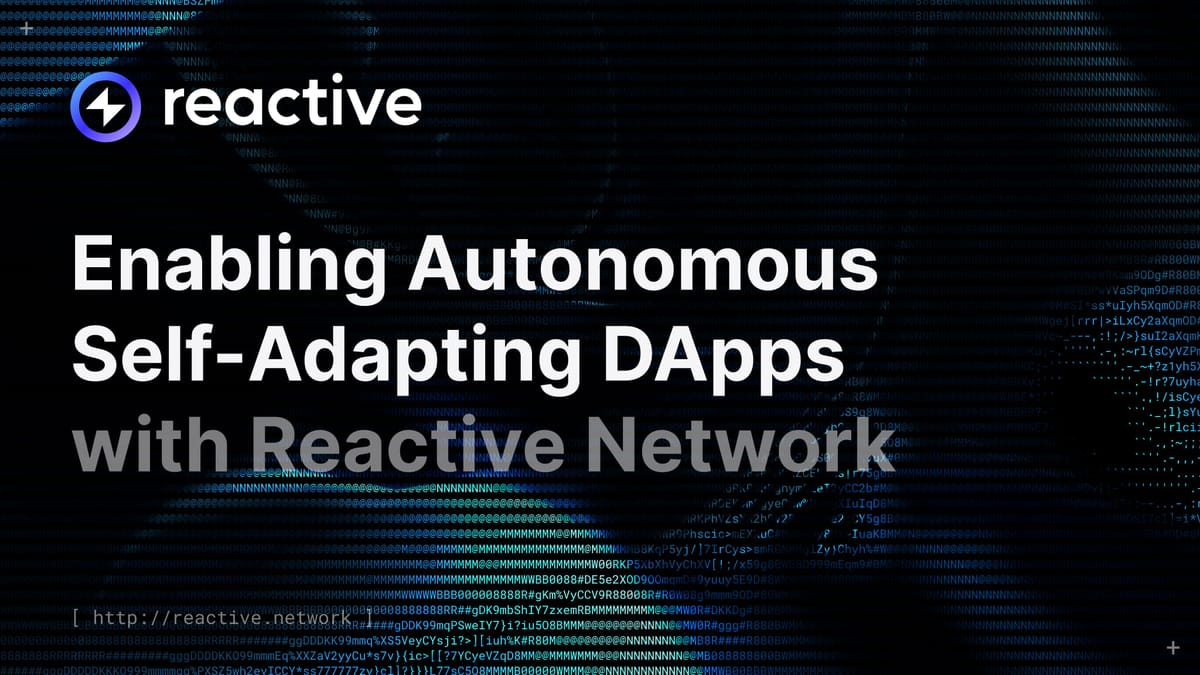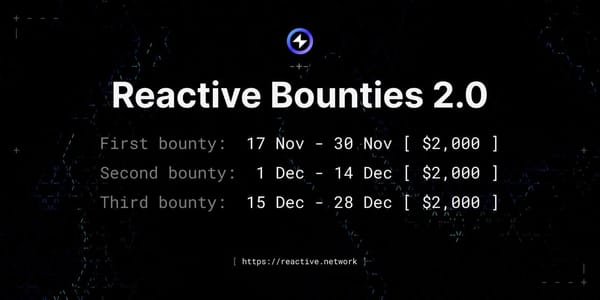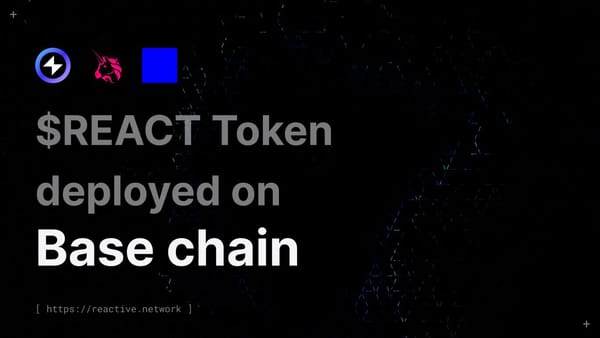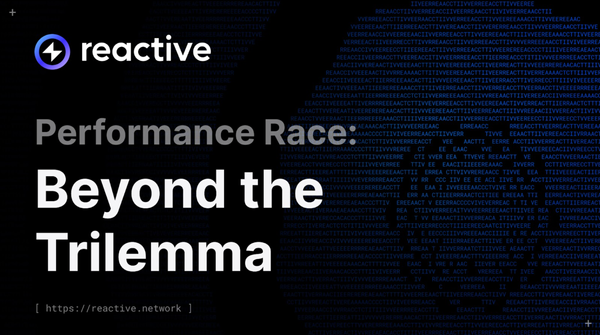Enabling Autonomous, Self-Adapting DApps with Reactive Network
Reactive Network introduces groundbreaking technology that empowers decentralized applications (DApps) to become fully autonomous and self-adapting, addressing the limitations of traditional blockchain systems by keeping all operations securely on-chain.

Numerous decentralized applications (DApps) have emerged as a result of the blockchain revolution, all of which promise increased security and transparency. Traditional DApps still face several serious drawbacks, though, like their reliance on off-chain data and static nature. Reactive Network is a cutting-edge technology that will completely transform DApps by allowing them to be autonomous, self-adapting, and fully on-chain.
The Concept of Self-Adapting DApps
Understanding Self-Adapting DApps:
Self-adapting DApps are decentralized applications that can autonomously adjust their behavior based on real-time on-chain events. This capability is crucial for the evolution of blockchain technology, as it allows DApps to dynamically respond to changes, enhancing their efficiency and functionality.
Imagine a decentralized finance (DeFi) application that manages automated trading on platforms like Uniswap. Usually, traders manually enter stop-loss or take-profit orders while continuously observing the state of the market. However, this procedure can be automated using Reactive Smart Contracts (RSCs) from Reactive Network. An RSC can be programmed, for example, to execute a trade upon the satisfaction of specific market conditions, such as the asset's price hitting a predetermined threshold. Traders can optimize their strategies without constant manual oversight thanks to this real-time responsiveness.
Role of Reactive Network:
Reactive Network makes use of RSCs, which function according to the Inversion of Control (IoC) principle. This implies that these contracts respond to outside events automatically rather than waiting for user-initiated actions. For instance, in the automated trading scenario, RSCs keep an eye on price feeds and, when certain conditions are satisfied, execute trades on their own, improving trading operations' accuracy and efficiency.
The architecture of the Reactive Network, which incorporates the Relayer Network, supports this strategy even more. This network makes sure that information is accurately and instantly relayed from multiple blockchains so that the RSCs can react quickly. Through complete on-chain operations, Reactive Network guarantees improved security, decreased latency, and lower costs.
Fully On-Chain DApps
Current Limitations:
Traditional smart contracts are often constrained by their reliance on off-chain data and limited cross-chain interoperability. This reliance on outside data sources results in higher operational costs, higher latency, and higher security risks. Due to these restrictions, DApps are unable to reach their full potential as they become less effective and more susceptible to outside threats.
Reactive Network’s Solution:
Reactive Network uses its cutting-edge Relayer Network to solve these issues by enabling smooth cross-chain interactions. Take a look at a decentralized finance (DeFi) application, for instance, that needs real-time price feeds from several blockchains in order to execute trades and adjust portfolios. To retrieve this data, traditional approaches would rely on off-chain oracles, which would add latency and possibly lead to security flaws.
On the other hand, the Relayer Network serves as a bridge that relays events between various blockchains that are compatible with the Ethereum Virtual Machine (EVM). By guaranteeing that every operation stays on-chain, this system makes use of the security and transparency that are built into the blockchain. For example, the Relayer Network can instantly relay an event of a price change on one blockchain to another, enabling a smart contract to automatically carry out a corresponding trade or adjustment.
Current Drawbacks and Development Challenges
Drawbacks with Traditional Systems:
In traditional blockchain systems, scalability issues, complex cross-chain operations, and security flaws are the main drawbacks. These difficulties raise costs, increase complexity, and obstruct development, making it difficult for developers to enter this sector.
Impact on Development:
These restrictions put major obstacles in the way of developers, hindering creativity and making the creation of sophisticated DApps difficult. The range of possible applications is restricted by the complexity and financial limitations. Conventional systems frequently call for a large amount of off-chain infrastructure, which can be expensive and insecure.
Reactive Network’s Approach:
Reactive Network addresses traditional blockchain limitations through its parallelized EVM implementation and the innovative Relayer Network. By enabling multiple smart contracts to execute concurrently, the system significantly improves scalability and reduces operational costs. This approach ensures that cross-chain interactions remain secure and efficient, as events are verified within the network before triggering on-chain actions.
Real-World Applications
Self-adapting DApps in the DeFi space can transform automated trading strategies and liquidity management by instantly reacting to market fluctuations. Dynamic NFTs in games can change in response to player accomplishments, increasing asset value and user engagement. These apps demonstrate how autonomous DApps can have an incredible impact.
Conclusion
Reactive Network is at the vanguard of blockchain innovation, enabling the creation of autonomous, self-adapting DApps that are fully on-chain. It expands the possibilities available to developers and users alike by resolving the drawbacks of conventional systems and offering a strong technological foundation. Significant changes to the blockchain ecosystem could result in more dynamic, effective, and secure DApps in the future.
Join our Hackathon and bounty program today to start building with Reactive Smart Contracts and bring your innovative ideas to life on the Reactive Network!
About Reactive Network
The Reactive Network, pioneered by PARSIQ, ushers in a new wave of blockchain innovation through its Reactive Smart Contracts (RSCs). These advanced contracts can autonomously execute based on specific on-chain events, eliminating the need for off-chain computation and heralding a seamless cross-chain ecosystem vital for Web3’s growth.
Central to this breakthrough is the Inversion of Control (IoC) framework, which redefines smart contracts and decentralized applications (DApps) by imbuing them with unparalleled autonomy, efficiency, and interactivity. By marrying RSCs with IoC, Reactive Network is setting the stage for a transformative blockchain era, characterized by enhanced interoperability and the robust, user-friendly foundation Web3 demands.





